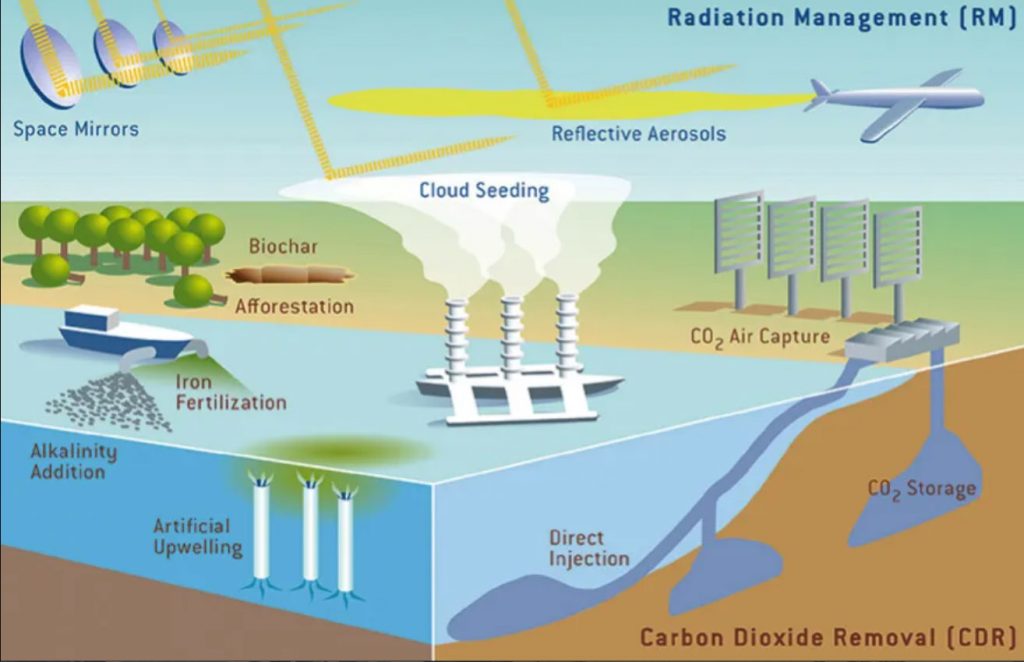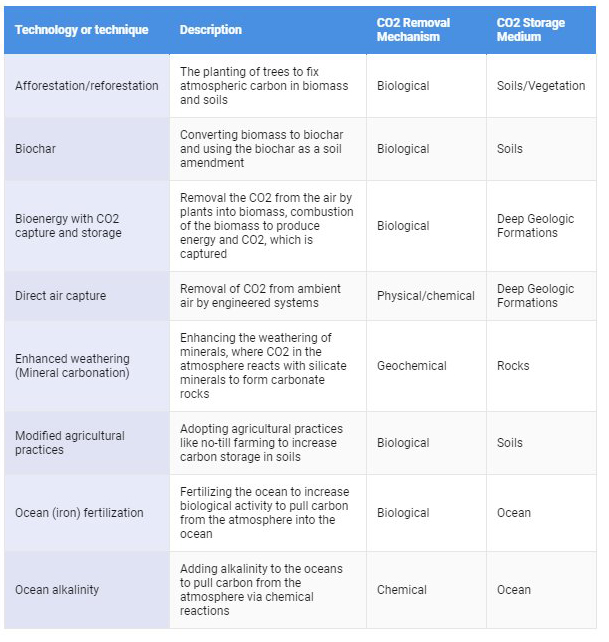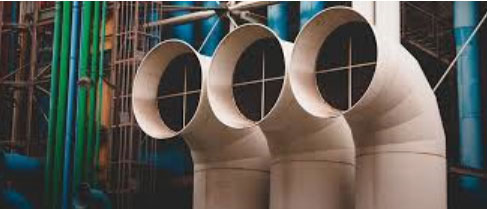“Instead of geoengineering being a last-ditch effort to avert the worst ravages of climate change, it’s going to have to be part of our toolkit to solve the problem.” – Eric Holthaus
Geoengineering: The Good, The MAD, The Sensible, and The Zen
This heading was inspired by a 2011 study by H.J. Shellnhuber, also titled The Good, The MAD, and the Sensible. It is an older study, but ever more relevant today. We were supposed to start to bring our emissions down globally at least two decades ago, but instead they have increased. Even though many groups like the Club of Rome are now calling for significant reduction of emissions by the 2020’s, it’s hard to imagine it happening by any stretch. Because we continue to fail to act in other ways to clean up our planet, geoengineering, which has been called a devil’s bargain, is becoming one of our only remaining options. Though it is certainly no substitute for cutting emissions. Researchers are saying that geoengineering will not solve climate change, but may buy some time.
In many ways we are already geoengineering the planet unintentionally, which is why we are headed for a 4°C world in the first place. This is also referred to as the trend toward a Hothouse Earth, described in the well-known and much downloaded study by Shellnhuber et al, titled Trajectories of the Earth System in the Anthropocene. Worse still, the climate has become reliant on the deadly, dirty emissions we have been releasing for decades. The aerosol pollutants littering the atmosphere are now arguably keeping us cool according to the science on global dimming and other related effects.
We have become like addicts living on the supply of a dark habit. In order to gradually withdraw, exploring geoengineering techniques is becoming increasingly necessary say some researchers. Many researchers are now reporting that it will likely be necessary to use some of these methods to assist the system to transition back to health and to slowly and gradually remediate the addiction. However, it is well known that this meddling with the planet poses enormous risks. As stewards of this system, it will be incumbent upon us to choose natural, non-toxic methods that do not further damage the Earth system which is already in jeopardy because of us.
“Tinkering with the atmosphere is what got us into this climate crisis in the first place, and is seen as fraught with menacing uncertainties about impacts to very complicated global atmospheric and hydrologic systems. Some scientists argue that this is why it must be researched, though hopefully never deployed.” – The Hill
This is a very delicate and difficult situation. Researchers are saying that geoengineering will not solve climate change, but may buy some time. It is going to be very important to have a discussion regarding what the ethical implications of these measures are. Scientists will need to carefully weigh the risks and benefits as they move forward in experimenting with this technology. There will need to be sign-off from many levels.
Jane C. S. Long, associate director-at-large of the Lawrence Livermore National Laboratory in California, said “Everyone I know who works on this is scared to death of this stuff,” in an interview with Yale Environment 360. “People aren’t doing this because they think, ‘Oh whoopee! We can change the Earth!’ They’re doing it because they just don’t see any progress [on CO2 emissions] and it just seems to be getting worse and they want options on the table.
In the following video, Professor Bill McGuire, a member of the Scientists’ Warning Advisory Board, discusses the hazards of geoengineering.
What is Geoengineering?
According to Wikipedia, “climate engineering or climate intervention, commonly referred to as geoengineering, is the deliberate and large-scale intervention in the Earth’s climate system, usually with the aim of mitigating the adverse effects of global warming.” This involves techniques to physically manipulate the global climate to cool the planet. The Union of Concerned Scientists have said that “this field of climate intervention (still in its infancy), has the potential to buy us some time in the attempt to maintain relatively slow warming rates.”
Geoengineering schemes are projects designed to tackle the effects of climate change directly, usually by removing CO2 from the air or limiting the amount of sunlight reaching the planet’s surface. Although large-scale geoengineering is still at the concept stage, advocates claim that it may eventually become essential if the world wants to avoid the worst effects of climate change. Critics, by contrast, claim that geoengineering isn’t realistic – and may be a distraction from reducing emissions. – The Guardian
History
Some forms of geoengineering, also known as a weather modification (not to be confused with chemtrail conspiracies [1]) have a long, controversial history dating back to 1940’s when ‘weather as weapon’ campaigns were first sought by the military. There is an ugly side to this. It is known that the military has long held the power to make it rain, increase storms, seed clouds, cause mudslides, flooding, earthquakes, volcanoes and more. Operation Popeye for example, was used to create storms in Vietnam to route the enemy.
 In any case, most of the history of climate warfare is beyond the scope of this resource except as a cautionary tale. The extent of military weather modification [2] programs is still largely unknown and unstudied by credible sources in the peer-reviewed literature. Therefore, the topic of climate warfare, its full history and its potential implications will not be discussed here.
In any case, most of the history of climate warfare is beyond the scope of this resource except as a cautionary tale. The extent of military weather modification [2] programs is still largely unknown and unstudied by credible sources in the peer-reviewed literature. Therefore, the topic of climate warfare, its full history and its potential implications will not be discussed here.
This knowledgebase is intended to provide an introduction to the primary forms of geoengineering methods proposed to avert climate-related disasters currently intensifying. However, the primary aim of this knowledgebase is to provide a focus on “natural geoengineering” as it pertains specifically to climate change remediation, rewilding, and restoration. Scientists’ Warning actively advocates for mitigations that seek to work with, and not against nature, in the least invasive ways possible. These methods aim to restore nature’s own order and attempt to aid the planetary system to right itself as quickly as possible so that more invasive and risky mitigations might not be needed.
Types of Geoengineering Techniques
The following illustration from Harvard shows the many geoengineering techniques now being discussed widely by researchers attempting to address and avert climate change and climate-related disasters. These techniques fall primarily under three categories: Solar radiation management (SRM), carbon dioxide removal (CDR), and weather modification (cloud seeding).
Solar Radiation Management
Solar radiation management (SRM), a currently highly trending form of geoengineering, is one method being discussed that could mitigate the widespread effects of pollution related to the aerosol masking effect. SRM has not been widely applied and it may require taking a risky gamble. SRM involves gradually eliminating pollution from factories, vehicles and other toxic sources; replacing it with artificial (natural, non-toxic) aerosols in the upper atmosphere where they’re much less likely to damage human health; and then praying nothing else goes wrong.
Scientists at Harvard are planning “the earliest official geoengineering-related experiments conducted outside of a lab, with plans to test spraying a fine mist of materials such as non-toxic sulfur dioxide, or calcium carbonate into the stratosphere. The basic idea is that spraying certain types of particles into the stratosphere could reflect more heat back into space.“ The Gates Foundation is also involved in funding a similar experiment now.
Scientists believe it could work, because it already occurs in nature. Large volcanic eruptions in the past have blasted tens of millions of tons of sulfur dioxide into the sky, which contributed to lower global temperatures in subsequent months. The historic Dalton minimum is one example of this. Climate Scientist, Paul Beckwith, discusses this in his recent blog Anthropogenic Arctic Volcano. This is taking a gamble which is likely to be risky and harmful at best, while lining the pockets of investors like Bill Gates. It is known that stratospheric aerosols reduce the amount of direct sunlight that reaches the surface of Earth, but increase diffuse light. The side effects of this are as yet unknown.
Cloud Seeding
Although controlling the weather this way may sound as if it belongs in the distant future, it’s actually been around for decades. At least eight states and dozens of countries use it to try to boost precipitation. Scientists are investigating many unconventional ways to combat climate-driven drought in the western U.S. One of them is cloud seeding, which entails spraying clouds with special particles to make them produce more snow or rain. These aren’t ordinary particles. They’re tiny bits of crushed-up chemical silver iodide, a crystal-like photosensitive substance. The most common chemicals used for cloud seeding include silver iodide, potassium iodide and dry ice (solid carbon dioxide). Liquid propane, which expands into a gas, has also been used. These chemicals theoretically fall back down to the Earth with the ensuing precipitation.
But so far, there is little evidence to show that the process is actually increasing precipitation. Worse, still studies have shown that these substances may be harmful to bees, pollinators, and other life. The silver ion is among the most toxic of heavy metal ions, particularly to microorganisms and to fish. Interest in cloud seeding is growing as temperatures steadily rise, increasing drought risks in places like the Mountain West. But there’s a big catch. Scientists aren’t sure how well cloud seeding works today, let alone in a warmer climate. This method is again a gamble.
Marine Cloud Brightening
A related method to cloud seeding is called marine cloud brightening. The general principle behind the marine cloud brightening (MCB), another climate engineering technique, is that seeding marine clouds with concentrations of natural seawater particles might significantly enhance cloud albedo and longevity, thereby producing a cooling effect. Preliminary studies of the possible beneficial application would mitigate the recovery of polar ice loss, the weakening of developing hurricanes, and the elimination or reduction of coral bleaching. Many more ocean-based solutions and techniques are being discussed.
Iron Salt Aerosols (ISAs)
According to Robert Tulip at Iron Salt Aerosol Australia Pty Ltd. “Iron Salt Aerosols are naturally occurring iron compounds, mainly iron chloride, that are main cooling agents in the earth’s atmosphere. Iron chloride removes carbon dioxide and other greenhouse gasses from the air, while also bringing extensive benefits for marine biology. Expanding ISA could be the single most economic, safe, easy and rapid contribution to reversing climate change.” ISA has numerous cooling effects. Iron Salt Aerosol (ISA) could provide rapid cooling to the oceans, methane removal and carbon dioxide removal (CRD).
A small group of scientific researchers led by European chemical engineers Franz D. Oeste and Renaud K. de Richter, are studying this very strong, easily affordable solution to climate change that is unlike conventional climate solutions. Their solution is to rekindle a series of natural processes that operated powerfully during each of the ice ages of the past million years. This would be done by increasing levels of bio-available iron in the atmosphere, using a variety of methods including aircraft dispersion and through the exhaust flues of power stations, ships and remote, purpose-built dispersion platforms. The breakthrough discovery is of numerous inter-related cooling mechanisms involving naturally occurring Iron Salt Aerosol (ISA).
Negative Emissions Technologies and Direct Air Capture (DAC)
While some scientists do not technically classify negative emissions technologies (NETs) as a form of geoengineering, others do. This topic is under debate. In any case, these technologies are worth noting in this discussion because they are also potentially natural and non-toxic methods that could reduce CO2 and get us back on track. They are sometimes called carbon engineering methods as well. According to Phys.org, many of the following “proposed NETs are highly speculative.” This article goes so far as to argue that these technologies won’t solve the problem.

What is Natural Geoengineering?
Because of it’s sordid history, geoengineering is often a feared concept. But it doesn’t have to be. There is a new and separate area of this study now emerging. It is referred to as ‘green’ or ‘natural geoengineering.’ Yale Climate Connections is discussing this at length and is an excellent resource on this topic. Natural geoengineering attempts to introduce protective measures that aim to to do no further harm by using natural, non-toxic elements to reverse the destruction already done by man to Nature. It also seeks to incorporate or attempts to incorporate rather than exclude indigenous and/or traditional wisdom methods. For example in Japan, these methods have been used to save cherry blossoms trees from climate change for some time.

“What it means is, we don’t have to fear clean air.” – Bjorn Stevens, Max Plank Institute
Regeneration & Rewilding
Additionally, the regenerative abilities of the planet are still largely unknown. We have to find every way we can to give them a chance. Rewilding, reforestation, and similar natural solutions remain the ideal. If we can get out of the way of nature, stop polluting and employ some natural geoengineering strategies to aid this process we might find way out of this very real predicament that has us on course for the sixth mass extinction. Many are looking to projects like retrosuburbia, UNM, and other discussions of how to rewild the earth toward creating an ecological civilization with permaculture and sustainable development practices as well. These options would be much preferable to risky geoengineering options that are toxic or unnatural.
Simple. Serious. Solvable.
As Greta Thunberg in Straight Talk (video) recently said, referring to the problem of climate change, that “the problem is already solved.” The only question is are we going to deploy the solutions in time? We have solutions which entail quitting fossil fuel and turning to renewable energy. The real problem is we aren’t using these solutions; and we may only have a short window to act. The situation is serious, even dire, but according to many scientists it is also still solvable, if we act now. In short, it would be advisable to leave the geoengineering to Hollywood.
Proposed Climate Engineering Projects:
- Arctic Ice Project
- Climeworks
- Geoengineering Projects Around the World Map
- Geotextiles (Blankets for Glaciers)
- Marine Cloud Brightening project
- MEER:ReflEction
- Oceaneos
- SCoPEx
- Space Sunshades and Umbrellas
- The Monk and The Artificial Glacier
______________________________________________
Hands Off Mother Earth!
With good reason, the Indigenous Environmental Network (IEN) is calling for a ban on many of the above mentioned projects, including a ban on all geoengineering field experiments and deployment. According to IEN, this would include a ban to halt to all open-air experiments, including: the SCoPEx project in Tucson, Arizona, which proposes to inject sulphate particles and other materials into the atmosphere to test their effectiveness at blocking the sun; the Ice911 project in Alaska, which would scatter millions of tiny glass bubbles over Arctic ice to slow melting and reflect sunlight; the Marine Cloud Brightening project in Monterey Bay, California, which would inject salt water into the clouds to whiten them and reflect sunlight; and the Oceaneos ocean fertilization project in Chile.
All three US experiments are planned on original and traditional Indigenous territories. This would also include putting a stop to all large-scale Carbon Capture and Storage and Direct Air Capture projects because they perpetuate fossil fuel extraction and combustion, and a stop to all Bioenergy with Carbon Capture and Storage projects, which besides being unproven and not technically feasible would have grave consequences for land use, food sovereignty environment and biodiversity. Support for the diversity of alternatives to confront climate change that are already proven and less risky but are sidelined in climate change deliberations.
[Further,] if the Saami had been consulted, as required under the UN Declaration on the Rights of Indigenous People, the project organizers would have learned that such research, in addition to the troubling uncertainties about impacts, violates the Saami worldview about how to live in harmony with the earth’s operating system. They would have been reminded that a privately-funded project with an affiliated business interest and a self-governance structure is not an appropriate model for a technology with such global implications.
These concerns are widespread. In fact, very few scientists, including at least one advisor to the SCoPEx project, believe that solar geoengineering should ever be deployed. Nervous about open-air geoengineering, the UN Convention on Biological Diversity established a moratorium back in 2015, with 196 countries signing on.
Climate change itself is a result of massive solar geoengineering. With a rapid and concentrated release of greenhouse gas pollution we’ve tinkered with our atmosphere to such a degree that we face catastrophic impacts of a changing climate. We have the technology and capacity to reverse that damage and clear a path for civilization to live without the ominous threat of planetary-scale disaster. That work must begin in earnest right away. Investing instead in a complicated and extremely risky Band-Aid — one developed in wealthy countries with a vested interest in the economic status quo — trades one ominous planetary threat for another, in a most injust way. Conducting research to support such an eventuality clears a pathway for an approach that is a dangerous distraction from an imperative social obligation to stop investing in yesterday’s fossil fuel energy sources. – The Hill
References:
|
Footnotes:
[1] Chemtrail Conspiracy Theories
The topics of geoengineering and weather modification must be separated from chemtrail conspiracy theories, another thing altogether. Let’s take a closer look at these are two very different things.
According to this article, “plane engines get hot. Much hotter than the atmosphere outside the plane, in fact. So when the exhaust leaves the plane, the water vapor freezes mid-air, causing a trail of ice behind the plane known as “contrails”. Or, if you believe in the “chemtrail” conspiracy theory, they are chemicals deliberately sprayed into the atmosphere by a government agency of your choosing, for unknown purposes…Advocates include Alex Jones and Chuck Norris, which should be all the warning you need. Unfortunately, this doesn’t seem to be the case, as a new study has found that 10 percent of Americans believe the chemtrail conspiracy is “completely true” and 20-30 percent believing it’s “somewhat true”. Social media appears to be the cause of the rise.” This number has only grown since this report. If you want to learn more about chemtrail conspiracy theories you might start with this debate (video).
“The first ever peer-reviewed study testing the chemtrails theory, conducted by researchers at the Carnegie Institution for Science in 2016. When asked if they’d ever uncovered possible evidence of a government chemtrail program in their research, 76 out of 77 leading atmospheric scientists and geochemists said NO.
… Perhaps the great tragedy of geoengineering hysteria is all the misdirected activist energy. Aircraft emissions do, in fact, pose an environmental risk: they contribute significantly to global warming. But instead of holding airlines and policymakers accountable for cutting emissions, anti-geoengineering activists shake their fists at the sky and curse a vague, unknowable ‘they’.” – The Guardian
This topic is entirely beyond the scope of this resource. Additionally, there just aren’t any studies available in the scholarly journal literature at this time linking these topics to climate change. (Back)
[2] History of Weather Modification: Weather as Weapon
This controversial form of geoengineering has a sordid history, some of which is classified military information. A NASA article on Nuking the Skies discusses early attempts at geoengineering and testing in the atmosphere as well as the subsequent test bans by 1963 (which as a tangential, unrelated aside was not unfortunately soon enough to stop the testing of the 58 megaton monster Tsar Bomba in 1958, the radiation is now leaking into the sea from melting glaciers, an horrific result of the ignorance of this time). Significant test bans and laboratory safety measures have since been put in place around geoengineering research, not that they are always followed. Numerous questions remain surrounding the scale and extent of weather modification campaigns conducted by government and military agencies for the last 70 years.
It is worth noting that ‘climatic warfare’ or the study of weather as weapon as it relates to climate change does appear to have been excluded from the agenda on climate change as there is almost no information available on it from peer-reviewed literature or other credible sources. In short, this topic is beyond the scope of the material introduced here. The intent of this resource is to provide a brief introduction to geoengineering, with a focus on natural geoengineering, only as related to, and for the purposes of, addressing and mitigating climate change.
__________________________________________________________________
Last Updated: 07/07/2021





